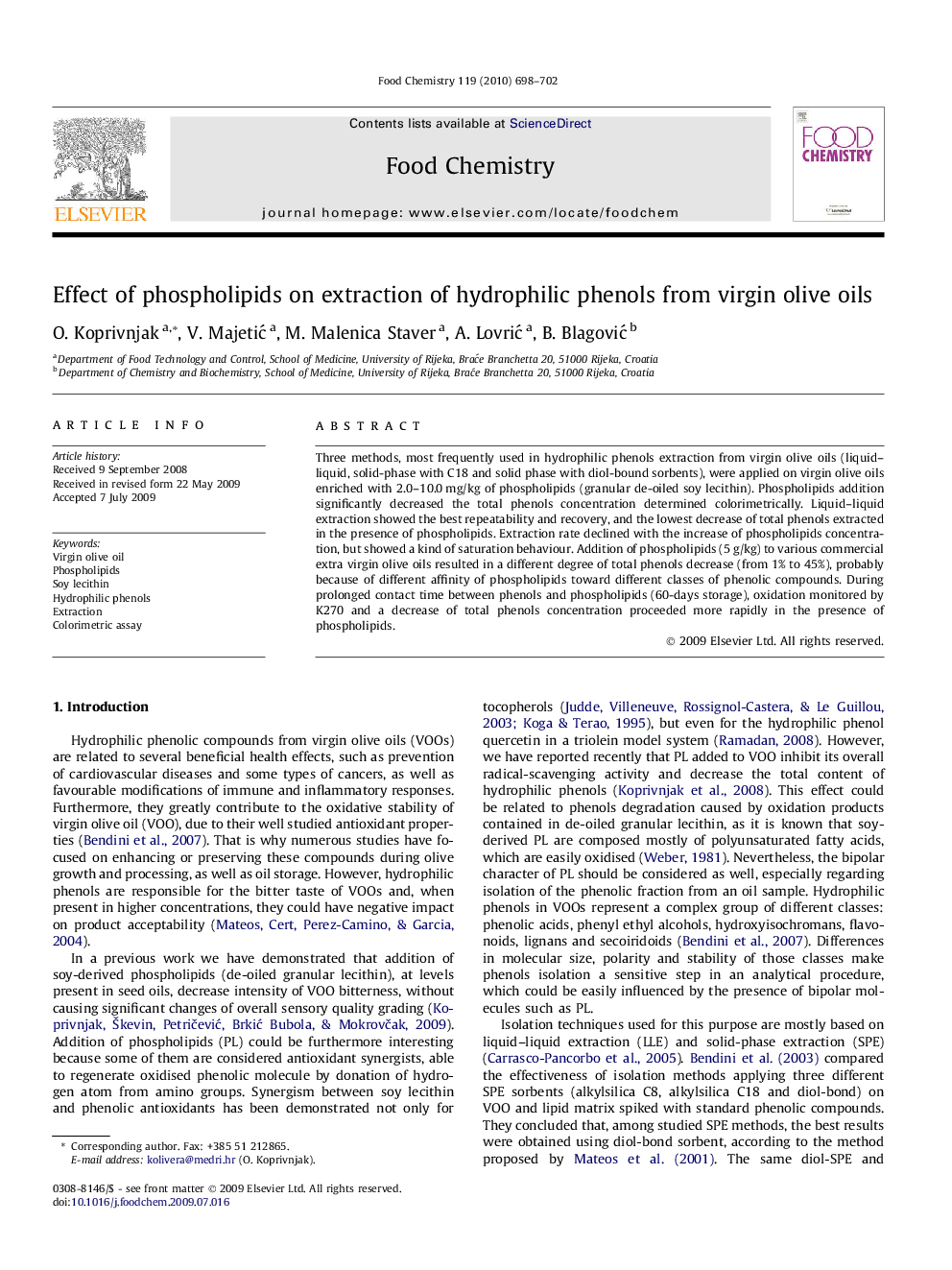| Article ID | Journal | Published Year | Pages | File Type |
|---|---|---|---|---|
| 1186713 | Food Chemistry | 2010 | 5 Pages |
Three methods, most frequently used in hydrophilic phenols extraction from virgin olive oils (liquid–liquid, solid-phase with C18 and solid phase with diol-bound sorbents), were applied on virgin olive oils enriched with 2.0–10.0 mg/kg of phospholipids (granular de-oiled soy lecithin). Phospholipids addition significantly decreased the total phenols concentration determined colorimetrically. Liquid–liquid extraction showed the best repeatability and recovery, and the lowest decrease of total phenols extracted in the presence of phospholipids. Extraction rate declined with the increase of phospholipids concentration, but showed a kind of saturation behaviour. Addition of phospholipids (5 g/kg) to various commercial extra virgin olive oils resulted in a different degree of total phenols decrease (from 1% to 45%), probably because of different affinity of phospholipids toward different classes of phenolic compounds. During prolonged contact time between phenols and phospholipids (60-days storage), oxidation monitored by K270 and a decrease of total phenols concentration proceeded more rapidly in the presence of phospholipids.
